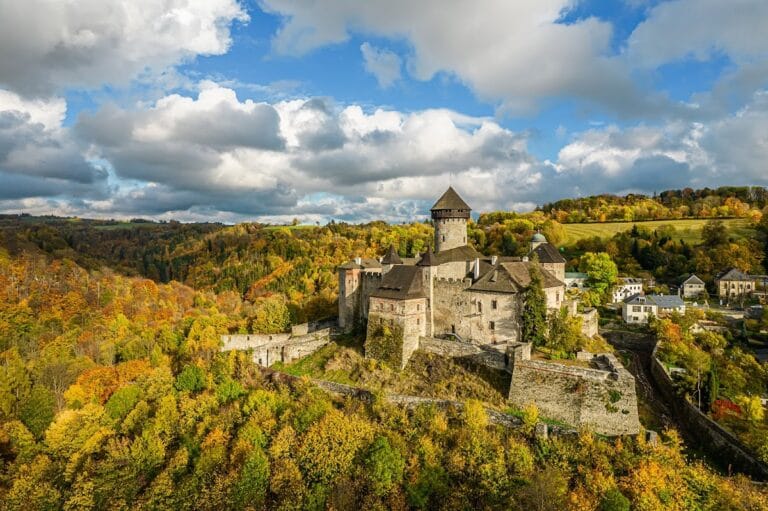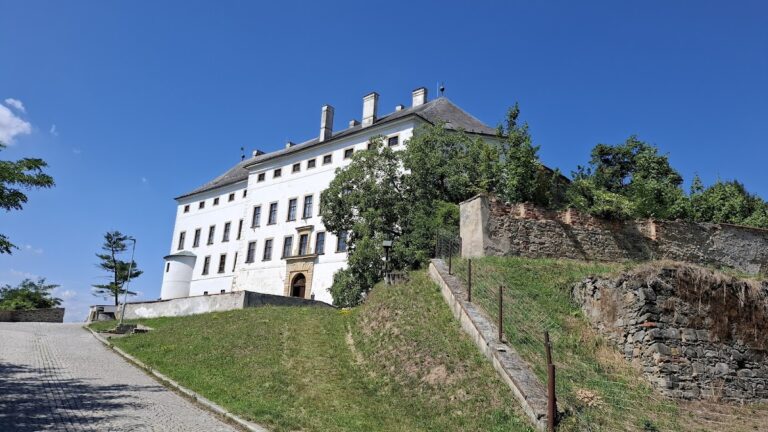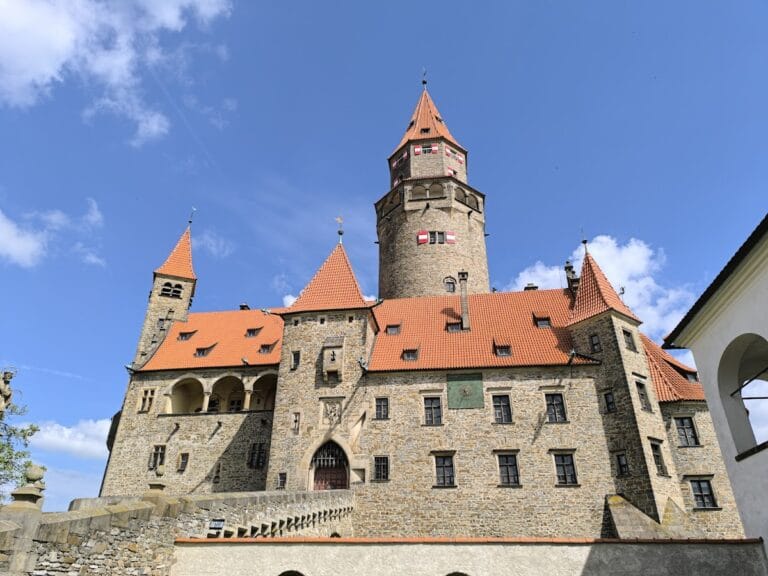Šternberk Castle: A Historic Fortress in the Czech Republic
Visitor Information
Google Rating: 4.6
Popularity: Medium
Google Maps: View on Google Maps
Official Website: www.hrad-sternberk.cz
Country: Czechia
Civilization: Medieval European
Remains: Military
History
Šternberk Castle is located in the town of Šternberk in the modern Czech Republic. The castle was founded in the mid-13th century by Zdeslav of Šternberk, a noble rewarded for his role in repelling a Cuman invasion in 1253. For his service, Zdeslav received the surrounding lands and the title of royal cup-bearer. The earliest written record mentioning Šternberk Castle dates from 1269.
Throughout its early history, the castle remained in the hands of the Šternberk family, with notable figures such as Štěpán and Albrecht Aleš of Šternberk. Albrecht, who became bishop of Litomyšl, transformed the castle into an episcopal residence and adorned the chapel with decorations reflecting the style found at the court of Charles IV in the 14th century. Ownership later passed to Petr of Šternberk, and by 1397, the castle came under Petr of Kravař.
In the 15th century, the castle faced upheaval during the Hussite Wars; it was occupied by Hussite forces in 1430, an event that marked a turbulent period for the site. Significant damage occurred later during the Thirty Years’ War in the 17th century. Following a disastrous fire, the Berka family, who then held the castle, initiated Renaissance-style expansions including the addition of a wing featuring the “Vizitkový Hall,” distinguished by its intricate rib vaulting.
By 1570, ownership transferred to the Silesian princes of Minsterberk, descendants of the Bohemian king George of Poděbrady, maintaining possession until their extinction in the mid-17th century. Around the turn of the 17th and 18th centuries, Prince Hans Adam I of Liechtenstein acquired Šternberk Castle. It remained in the Liechtenstein family until 1945. During this long tenure, the castle experienced decline and partial abandonment.
A significant restoration took place in 1886 under the direction of Viennese architect Karl Gandolph Kayser, commissioned by Prince Johann II of Liechtenstein. This work embraced the Neo-Gothic style, repairing structural damage and updating interiors. Early in the 20th century, between 1907 and 1909, a forest park was designed near the castle by Albert Esche, also of Vienna.
Following the nationalization of the castle in 1945, the Liechtenstein family made efforts to recover it, but the site remained under state ownership. In recent years, conservation initiatives culminated in a major restoration from 2019 to 2022 to address long-standing neglect and structural deterioration. The castle now preserves valuable collections of historic furnishings, artworks, tapestries, and antique weaponry that reflect its centuries-old heritage.
Remains
Šternberk Castle sits atop a rocky promontory of the Nízký Jeseník mountain range, approximately 300 meters above sea level, overlooking the surrounding landscape and the town below. The castle’s layout includes multiple wings and fortifications that developed over several centuries, combining medieval origins with later Renaissance and Neo-Gothic modifications.
One of the castle’s most notable interior features is the Renaissance wing added during the Berka family’s reconstruction. Here lies the “Vizitkový Hall,” renowned for its distinctive rib vaulting, a form of ceiling supported by intersecting arches that create a framework resembling ribs. This architectural element adds both structural strength and visual complexity.
The chapel within the castle complex retains medieval decoration inspired by the artistic style prevalent at the court of Emperor Charles IV in the 14th century. It reflects the religious significance the castle held during the period when it served as a bishop’s residence.
Surrounding the main fortress are former economic and administrative buildings that formed a connected settlement, constructed under the Berka family’s management. These structures supported the castle’s functioning as a seat of local power and governance.
The 19th-century Neo-Gothic restoration brought both structural repairs and stylistic enhancements. Architect Karl Gandolph Kayser’s work consolidated the complex, preserving historic forms while introducing pointed arches and decorative elements characteristic of the Gothic revival.
Adjacent to the castle, a forest park was laid out between 1907 and 1909 under the guidance of architect Albert Esche. This landscaped area provides a designed natural setting, complementing the castle’s elevated position.
By the early 21st century, certain external parts of the castle showed signs of deterioration, including the eastern retaining wall of the parkán—a defensive outer enclosure—the stone bridge leading to the main entrance, and sections of the courtyard’s enclosure wall with its associated shed. The western rampart and terrace near the cylindrical tower also required attention. Recent conservation efforts have aimed to stabilize and restore these elements to protect the site’s integrity.
Today, Šternberk Castle remains accessible and is managed by the National Heritage Institute’s regional office in Olomouc, serving as a well-preserved example of layered architectural styles spanning from the medieval period through the Renaissance and into the 19th century.










